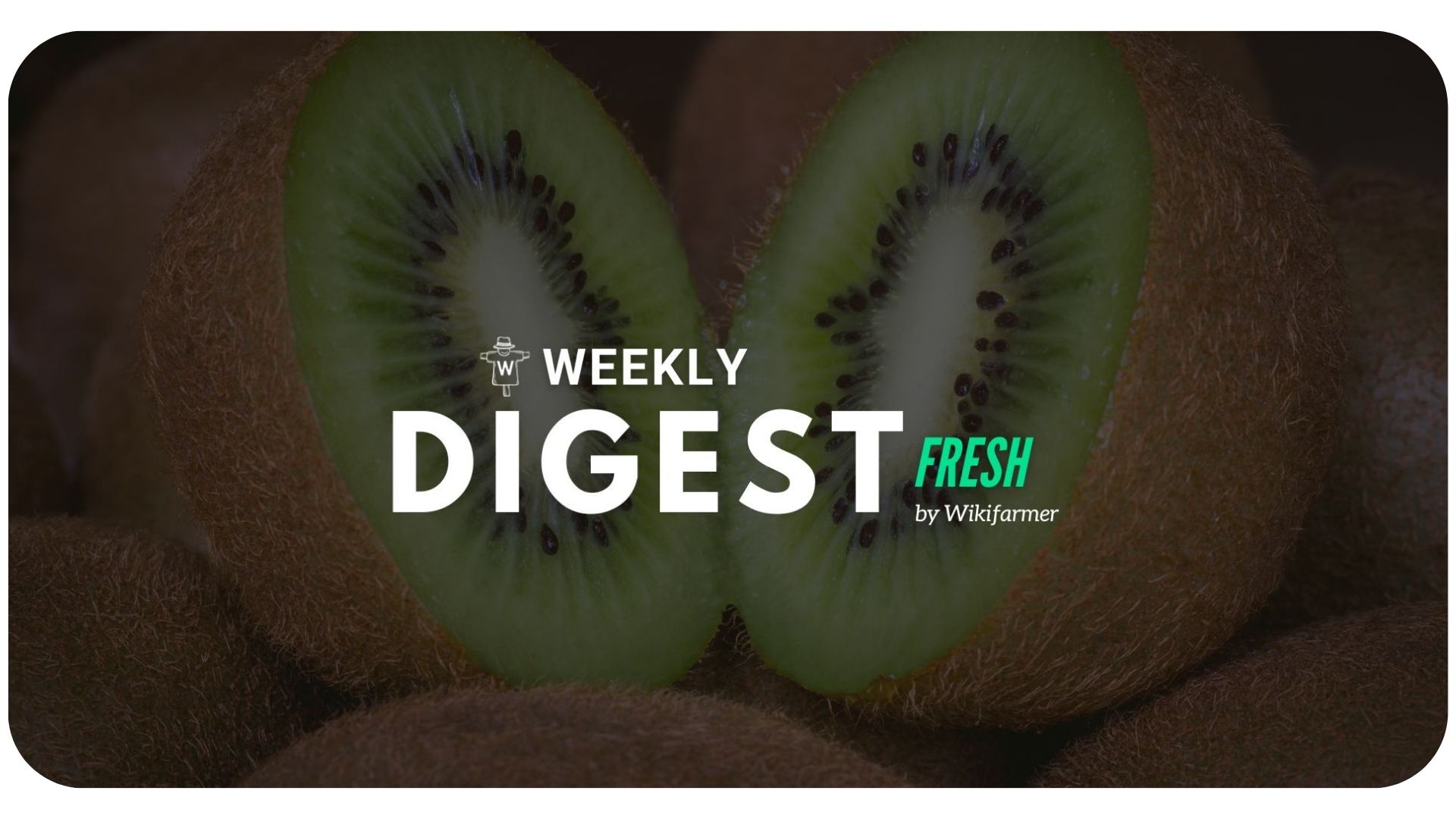Kiwi Market Digest w39

Weekly Updates on the B2B Kiwi Market
European Produce Enters Wholesale Markets
Over the past two weeks, Greek and Italian kiwifruit have gradually entered the wholesale markets across Europe as an alternative to imported produce, mainly from New Zealand and Chile.
With the main wholesale markets in Germany as a point of reference, price observations given by the Federal Ministry of Food and Agriculture imply that European produce, coming from Italy and Greece, is a budget-efficient alternative to imported kiwifruit, with a mean price difference of €0.35 / Kg.

Currently, Greek and Italian produce prices are fluctuating, resulting in a week-to-week mean increase of 5.78% between the 36th and 37th calendar weeks, using cal. 30/33 as the reference point.
According to data collected weekly by Wikifarmer's agents in Lyon's wholesale market, there has been a slight decrease (around 1-2%) in the category and caliber of kiwifruit mentioned earlier. A similar trend has been observed in Rotterdam's wholesale market but to a lesser extent.
Updated Production Volume Forecasts
During the 42nd conference of the International Kiwifruit Organization held in Chile on 12-14 September, significant insights and forecasts revolving around production volumes came to view, which, since the start of the harvesting season in Europe, foretell a global reduction in kiwifruit production levels, of about 4% YoY.
The breakdown of this is unfortunate for Europe, whose main producing countries, Italy and Greece, are projected to face a reduction in production volumes of 15% and 3%, respectively. This astounding change in Italy's volumes is once again the result of the crop disease 'Moria', which continues to destroy kiwifruit crops across the country.
Limited kiwifruit availability in the 2023 season has already been witnessed in New Zealand and Chile, the main exporters of kiwifruit to Europe.
%20Change%20in%20Kiwifruit%20Production%20Volumes.png?upscale=true&width=820&upscale=true&name=(%25)%20Change%20in%20Kiwifruit%20Production%20Volumes.png)
Consumption Levels Projected to Continue to Rise
On the consumption levels front, discussions of our agents with players in the kiwifruit market suggest, and research confirms, that the European kiwifruit market is going to continue to expand. SPER Market Research concludes in recent research that the Common Annual Growth Rate for the European kiwifruit market up to 2033 will reach the level of 5.94%.
Wikifarmer's View
These contrasting trends between production volumes and consumption levels foreshadow hiking interest in the kiwifruit market segment. That's true both for farmers, who could increase their income and their market exposure by positioning their production in the appropriate markets, as well as for B2B buyers of kiwifruit, either that is Wholesalers or Food Production Units, who need to find scalable and secure ways to meet market demand in the most financially and quality-wise sound manner.
.jpg?width=309&height=280&name=1000019143%20(1).jpg) A great example of this situation lies in the great surge in demand for 'ready-to-eat' fruits. This trend makes fruit-dealing companies adopt new ripening solutions, so as to make sure they can provide their customers in various parts of the world with products for immediate consumption. This is an opportunity for them since it can help them increase the added value of their products. However, it is also a challenge, mainly on the sourcing frontier, because they need fruit of various ripeness levels in order to process it timely and send it to various markets with the desired characteristics.
A great example of this situation lies in the great surge in demand for 'ready-to-eat' fruits. This trend makes fruit-dealing companies adopt new ripening solutions, so as to make sure they can provide their customers in various parts of the world with products for immediate consumption. This is an opportunity for them since it can help them increase the added value of their products. However, it is also a challenge, mainly on the sourcing frontier, because they need fruit of various ripeness levels in order to process it timely and send it to various markets with the desired characteristics.
.jpg?upscale=true&width=1200&upscale=true&name=Weekly%20digest%20(9).jpg)
.png?width=450&height=87&name=New%20Logo%20(1).png)
